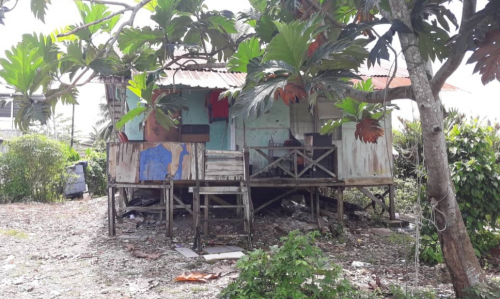LETTER | Time to deepen our understanding of poverty
LETTER | Poverty eradication has long been a core tenet of our country’s economic development goal. Since independence, Malaysia has made significant progress in eradicating poverty.
In 2022, the proportion of households living in hardcore poverty- those unable to afford sufficient food to meet basic caloric needs - stood at 0.2 percent or 18,445 households.
At the same time, absolute poverty, which includes those unable to meet basic needs beyond food, was recorded at 6.2 percent, a slight increase from 5.6 percent in 2019.
However, poverty is not just about income. It is a multidimensional challenge beyond the lack of money, including various forms of deprivation.
The theme of the 2024-2025 International Day for the Eradication of Poverty: “Ending Social and Institutional Maltreatment Acting Together for Just, peaceful and Inclusive Societies”, highlights one of the hidden dimensions of poverty: the social and institutional mistreatment faced by those living in poverty.
Like many other nations, Malaysia has begun recognising poverty's complexities by incorporating income-based (monetary) and multidimensional indicators (non-monetary) into its measurements.
Among the income-based measures used to assess poverty in Malaysia is absolute poverty, set by a poverty line income (PLI), which determines a minimum threshold for household earnings necessary to meet basic needs like food, clothing, and shelter.
While Malaysia’s national rate of absolute poverty was at 6.2 percent in 2022, 107 districts had an incidence higher than the national rate. Among them, 62 districts had a prevalence of absolute poverty above 12.4 percent.
The prevalence of households in absolute poverty was noticeably higher in East Malaysia.
Meanwhile, the range of poverty deprivation in Peninsular Malaysia can greatly vary. Districts along the west coast showed lower incidences of absolute poverty, while central and east coast districts had absolute poverty rates higher than the national average.
This brings to attention the unequal distribution of poverty across the country and the economic challenges many households still face.
Beyond monetary poverty, Malaysia also employs the Multidimensional Poverty Index (MPI), which measures deprivation across education, health, living conditions, and income.
In 2022, 1.9 percent of households are multidimensionally poor - an improvement to the 2.6 percent in 2019.
However, the incidence and deprivation intensity of households in multidimensional poverty is consistently higher in rural areas, again showing the unequal distribution of poverty in Malaysia.
This also calls for the need to assess multidimensional poverty at the district level to better identify highly deprived areas.
Multidimensional poverty recognises that poverty can involve a range of deprivations, including poor access to healthcare, education, housing, clean water, sanitation, and living standards.
However, current MPI indicators still have limitations in measuring non-income aspects of poverty, as they overlook important qualitative elements such as food security, nutrition, education quality, advanced healthcare, and digital connectivity - all of which are becoming increasingly relevant in modern poverty eradication efforts.
The MPI should also incorporate indicators that reflect higher living standards and can provide more meaningful insights into household poverty, especially in targeting and addressing overlapping deprivations.
Additionally, assessing various poverty indicators at the district level offers a more nuanced and comprehensive understanding of the poverty experienced by different households.
Many districts that report higher absolute poverty rates also show lower access to basic amenities, indicating a strong overlap between monetary and non-monetary poverty. This is particularly concerning in areas where income and access to services are severely lacking.
As the global understanding of poverty evolves, so has Malaysia’s. Our country’s recognition of multidimensional poverty and the 2019 revised poverty line income are steps in the right direction, reflecting Malaysia’s growing understanding of poverty.
However, gaps remain to be addressed - particularly in how we measure multidimensional poverty.
It is also important to acknowledge that poverty is dynamic and that the attention of poverty eradication should not only focus on those currently in poverty but also on households at risk of falling into poverty in the future.
Furthermore, inclusive policymaking that involves impoverished communities is essential to gain more significant insights into the obstacles faced when trying to overcome poverty.
Ultimately, poverty is not just a matter of material deprivation; it also affects human dignity. People who lack basic services and opportunities are often excluded from fully participating in society.
The evolving perspective not only enhances our ability to measure poverty but can also guide effective policies that aim to reduce both material and non-material forms of deprivation, promoting equity, dignity, and sustainable development.
The views expressed here are those of the author/contributor and do not necessarily represent the views of Malaysiakini.
RM12.50 / month
- Unlimited access to award-winning journalism
- Comment and share your opinions on all our articles
- Gift interesting stories to your friends
- Tax deductable
